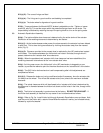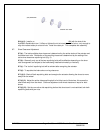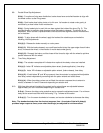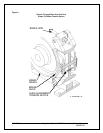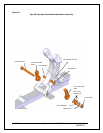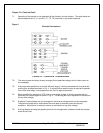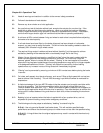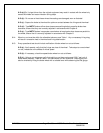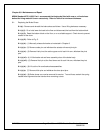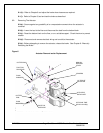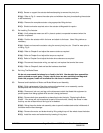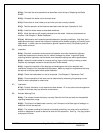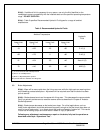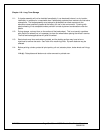
9.5.(g): Re-install the shoe assemblies as described under the topic “Replacing the Brake
Shoes”.
9.5.(h): Re-attach the brake rod to the brake lever.
9.5.(i): Ensure that all shoe holder pivot and hitch pins are correctly installed.
9.5.(j): Test the operation of the brake as described under the topic “Operational Test”.
9.5.(k): Install the brake wheel as described elsewhere.
9.5.(l): Verify the brake is still properly centered over the wheel. Make any adjustments as
required. See Chapter 5, “Brake Installation”.
9.5.(m): Maintenance and inspection periods depend on operating conditions. High duty cycle
applications obviously require more frequent inspections than brakes operating on low duty cycle
applications. In either case, we recommend a general inspection every 100 operating hours or
every month minimum.
9.6: Inspection
9.6.(a): Electrical connections and mechanical fasteners should be checked for tightness.
Inspect the brake wheel to ensure that it is neither damaged nor loose. Inspect the brake
mounting bolts for tightness, and that brake shoe clearance settings are within specifications.
9.6.(b): Inspect the brake wheel for unusual scoring, signs of over-heating, cracking or wear.
Replace any damaged, cracked or excessively worn brake wheels.
9.6.(c): Inspect the condition of the bearings and bushings as well as the electrical and
mechanical integrity of the complete braking system. Make any repairs or adjustments that may
be required to ensure proper brake system operation.
9.6.(d): Check the brake wheel run-out at all speeds. See Chapter 8, “Operational Test”.
9.6.(e): Correct operation of the motor can be determined by measuring its operating current.
Refer to motor nameplate for rated value.
9.7: Lubrication
9.7.(a): Periodic lubrication is not required on these brakes. Oil or any other lubricant applied to
any part of the brake may trap airborne contaminants.
9.8: Actuator Working Fluid
9.8.(a): The actuator leaves the factory correctly filled with the fluid and seals for the specified
operating temperature range.
9.8.(b): The fluid will not deteriorate in service, and if there are no tell-tale signs of leakage, no
additional fluid will be required.
9.8.(c): The actuator working fluid should be checked periodically, but must not be overfilled to
ensure an adequate air space is retained to allow for fluid expansion. See Fig. 1 for plug location
and proper fluid level.
8/17/2006 Page 30 of 33 MST/E Electric Shoe Brakes Manual
560022-R6



